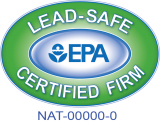Windows play so many roles in our homes: they let natural light in, serve as insulation, provide protection from the elements and bugs, improve energy efficiency, and add curb appeal. Yet, despite all the great things that can be said about windows, they do have one unnerving characteristic: Sometimes, they break for no apparent reason.
As frustrating as this can be, it’s helpful to understand why this happens and what you can do to prevent it.
Is Spontaneous Glass Breakage Normal?
While rare, spontaneous glass breakage does happen sometimes in double-paned windows, due to the pressurized gas between the panes.
It can also happen to tempered glass, which is a tougher type of glass that has been treated with heat and chemicals to withstand high impacts.
Causes of Broken Windows
There are several things that could cause a window or tempered glass to spontaneously break.
- Thermal stress. This is what happens to double-paned (or double-glazed) windows when there’s a significant difference between the temperature inside and outside of your home. [Please link What are the Benefits of Double Glazed Windows blog when published].
- Large or narrow windows. Square windows distribute weight evenly. However, longer windows are exposed to more stress due to weight variances. This increases the risk of spontaneous breakage.
- Damaged edges. Whether during the manufacturing, storing, transportation, or installation process, windows can endure scratches and chips. If it goes unnoticed at the time of installation, it can result in spontaneous breakage as the glass contracts and expands during temperature changes.
- Improper installation. There are many factors that should be considered when installing windows, such as the pane’s dimensions, stress, and pressure. These influence the safety of the window as additional pressure on certain portions of it can increase the likelihood of breakage.
How to Prevent Windows From Breaking
The most important thing you can do to prevent windows from breaking is to hire experienced professionals who will take into account extreme temperature changes as well as your home’s structure.
Improve Your Home’s Appearance With Help From Allied Siding & Windows
If you’re a Texas resident and you’re experiencing window woes, don’t hesitate to contact Allied Siding & Windows! We are a proud James Hardie® Elite Preferred Contractor, so you can rest assured that you’re working with one of the best window installers in the industry. Contact us for more information about our services or stop by one of our showrooms in Austin, Dallas, or Houston!














